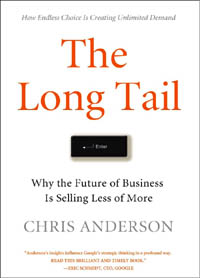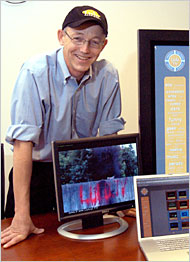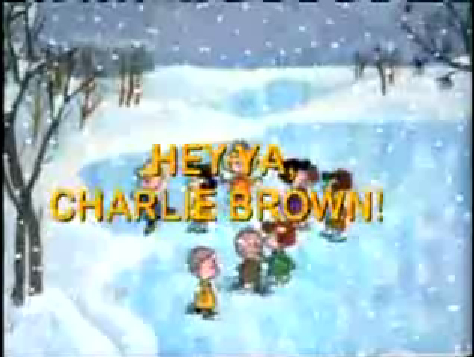
A local story. The Brooklyn Museum has been availing itself of various services at Flickr in conjunction with its new “Grafitti” exhibit, assembling photo sets and creating a group photo pool. In addition, the museum welcomes anyone to contribute photographs of grafitti from around Brooklyn to be incorporated into the main photo stream, along with images of a growing public grafitti mural on-site at the museum where visitors can pick up a colored pencil and start scribbling away. Here’s a picture from the first week of the mural:

This is an interesting case of a major cultural institution nurturing an outer curatorial ring to complement, and even inform, a central exhibit (the Institute conducted a similar experiment around Christo’s Gates installation in Central Park, 2005). It’s especially well suited to a show about grafitti, which is already a popular subject of amateur street photography. The museum has cleverly enlisted the collective eyes of the community to cover a terrain (a good chunk of the total surface area of Brooklyn) far too vast for any single organization to fully survey. (The quip has no doubt already been made that users be sure not forget to tag their photos.)
Thanks, Alex, for pointing this out.
Monthly Archives: July 2006
the myth of universal knowledge 2: hyper-nodes and one-way flows
 My post a couple of weeks ago about Jean-Noël Jeanneney’s soon-to-be-released anti-Google polemic sparked a discussion here about the cultural trade deficit and the linguistic diversity (or lack thereof) of digital collections. Around that time, Rüdiger Wischenbart, a German journalist/consultant, made some insightful observations on precisely this issue in an inaugural address to the 2006 International Conference on the Digitisation of Cultural Heritage in Salzburg. His discussion is framed provocatively in terms of information flow, painting a picture of a kind of fluid dynamics of global culture, in which volume and directionality are the key indicators of power.
My post a couple of weeks ago about Jean-Noël Jeanneney’s soon-to-be-released anti-Google polemic sparked a discussion here about the cultural trade deficit and the linguistic diversity (or lack thereof) of digital collections. Around that time, Rüdiger Wischenbart, a German journalist/consultant, made some insightful observations on precisely this issue in an inaugural address to the 2006 International Conference on the Digitisation of Cultural Heritage in Salzburg. His discussion is framed provocatively in terms of information flow, painting a picture of a kind of fluid dynamics of global culture, in which volume and directionality are the key indicators of power.
First, he takes us on a quick tour of the print book trade, pointing out the various roadblocks and one-way streets that skew the global mind map. A cursory analysis reveals, not surprisingly, that the international publishing industry is locked in a one-way flow maximally favoring the West, and, moreover, that present digitization efforts, far from ushering in a utopia of cultural equality, are on track to replicate this.
…the market for knowledge is substantially controlled by the G7 nations, that is to say, the large economic powers (the USA, Canada, the larger European nations and Japan), while the rest of the world plays a subordinate role as purchaser.
Foreign language translation is the most obvious arena in which to observe the imbalance. We find that the translation of literature flows disproportionately downhill from Anglophone heights — the further from the peak, the harder it is for knowledge to climb out of its local niche. Wischenbart:
An already somewhat obsolete UNESCO statistic, one drawn from its World Culture Report of 2002, reckons that around one half of all translated books worldwide are based on English-language originals. And a recent assessment for France, which covers the year 2005, shows that 58 percent of all translations are from English originals. Traditionally, German and French originals account for an additional one quarter of the total. Yet only 3 percent of all translations, conversely, are from other languages into English.
…When it comes to book publishing, in short, the transfer of cultural knowledge consists of a network of one-way streets, detours, and barred routes.
…The central problem in this context is not the purported Americanization of knowledge or culture, but instead the vertical cascade of knowledge flows and cultural exports, characterized by a clear power hierarchy dominated by larger units in relation to smaller subordinated ones, as well as a scarcity of lateral connections.
Turning his attention to the digital landscape, Wischenbart sees the potential for “new forms of knowledge power,” but quickly sobers us up with a look at the way decentralized networks often still tend toward consolidation:
Previously, of course, large numbers of books have been accessible in large libraries, with older books imposing their contexts on each new release. The network of contents encompassing book knowledge is as old as the book itself. But direct access to the enormous and constantly growing abundance of information and contents via the new information and communication technologies shapes new knowledge landscapes and even allows new forms of knowledge power to emerge.
Theorists of networks like Albert-Laszlo Barabasi have demonstrated impressively how nodes of information do not form a balanced, level field. The more strongly they are linked, the more they tend to constitute just a few outstandingly prominent nodes where a substantial portion of the total information flow is bundled together. The result is the radical antithesis of visions of an egalitarian cyberspace.
 He then trains his sights on the “long tail,” that egalitarian business meme propogated by Chris Anderson’s new book, which posits that the new information economy will be as kind, if not kinder, to small niche markets as to big blockbusters. Wischenbart is not so sure:
He then trains his sights on the “long tail,” that egalitarian business meme propogated by Chris Anderson’s new book, which posits that the new information economy will be as kind, if not kinder, to small niche markets as to big blockbusters. Wischenbart is not so sure:
…there exists a massive problem in both the structure and economics of cultural linkage and transfer, in the cultural networks existing beyond the powerful nodes, beyond the high peaks of the bestseller lists. To be sure, the diversity found below the elongated, flattened curve does constitute, in the aggregate, approximately one half of the total market. But despite this, individual authors, niche publishing houses, translators and intermediaries are barely compensated for their services. Of course, these multifarious works are produced, and they are sought out and consumed by their respective publics. But the “long tail” fails to gain a foothold in the economy of cultural markets, only to become – as in the 18th century – the province of the amateur. Such is the danger when our attention is drawn exclusively to dominant productions, and away from the less surveyable domains of cultural and knowledge associations.
John Cassidy states it more tidily in the latest New Yorker:
There’s another blind spot in Anderson’s analysis. The long tail has meant that online commerce is being dominated by just a few businesses — mega-sites that can house those long tails. Even as Anderson speaks of plentitude and proliferation, you’ll notice that he keeps returning for his examples to a handful of sites — iTunes, eBay, Amazon, Netflix, MySpace. The successful long-tail aggregators can pretty much be counted on the fingers of one hand.
Many have lamented the shift in publishing toward mega-conglomerates, homogenization and an unfortunate infatuation with blockbusters. Many among the lamenters look to the Internet, and hopeful paradigms like the long tail, to shake things back into diversity. But are the publishing conglomerates of the 20th century simply being replaced by the new Internet hyper-nodes of the 21st? Does Google open up more “lateral connections” than Bertelsmann, or does it simply re-aggregate and propogate the existing inequities? Wischenbart suspects the latter, and cautions those like Jeanneney who would seek to compete in the same mode:
If, when breaking into the digital knowledge society, European initiatives (for instance regarding the digitalization of books) develop positions designed to counteract the hegemonic status of a small number of monopolistic protagonists, then it cannot possibly suffice to set a corresponding European pendant alongside existing “hyper nodes” such as Amazon and Google. We have seen this already quite clearly with reference to the publishing market: the fact that so many globally leading houses are solidly based in Europe does nothing to correct the prevailing disequilibrium between cultures.
mining for emergent discourse
 Last spring, I was completely obsessed with the Brokeback Mountain trailer remixes. I found them to be part parody and part distillation of commentary on the hero archetype. The remixes produced an emergent discourse, without the intention of the creators.
Last spring, I was completely obsessed with the Brokeback Mountain trailer remixes. I found them to be part parody and part distillation of commentary on the hero archetype. The remixes produced an emergent discourse, without the intention of the creators.
Virginia Kuhn posed a very interesting thought in her comment to the post:
I wonder however, if the aggregate discourse created will be able to shed reliance on archetypes that don’t seem entirely natural but more cultural in nature. In other words, I wonder if the hero can be submerged in favor of something else… It seems to me that would be quite radical.
A great place to mine for these new types of emergent discourse is ytmnd.com, where a incredibly rich discourse is going on purely through multimedia texts. As with most viral media, I was first shown the site a few years ago at work, in this case, by a former colleague Brian.
ytmnd.com refers to a website sampling Sean Connery’s line “You’re the man now, dog!” from the film “Finding Forester.” The site contained with a tiled of image of Mr. Connery, a bit of text, and a sound loop. What was intended on being a one-off post lead to the creation of an entire site devoted to similar sampled remixes inspired by the original, which anyone can upload. What a “post” is difficult to describe and is almost a genre to itself. However, there are common features, including animated gifs, tiled images in a webpage background, limited text, techno-pop samples, Nintendo imagery and science fiction references. The lack of text, micro-length, and heavy use of pop culture is a reflection upon the evolving norms of our cultural language in the digital networked society.
The low production values has interesting effects on the site. Because the barrier of entry is lowered, the speed of production allows for responding to events or other posts in real time. The vibrant spontaneous “conversation” is seen with the immediate reactions to the ejection of French soccer player, Zinedine Zidane, in the 2006 World Cup championship match for head-butting a player on the Italian national team. By the end of the next day a series of posts had been watched tens of thousands of times, with the most popular entry currently having over 200,000 views. People have posted various commentaries on the incident, with the more amusing ones having theories behind Zidane’s action, involving missiles and candy.
However, as with any open and accessible forum, much of the work can be juvenile, crude, not appropriate for work, and plainly offensive. Many posts are not safe for work. The number of page views a far from perfect, but not terrible filter for quality. A community has emerged around the site, as has a media ecology, where one example inspires the creation of others. Often a popular post, will initiate others to riff off the post and create responses. For instance, Picard Song was the first post to be uploaded to the ytmnd.com site after it went live. As of July 11,2006, a search for Picard reveals 1,261 entries. Including, YOU’RE THE CAPTAIN PICARD NOW! (made four days after Picard Song) and of course Picard and Zidane. Picard IS the Empire has cultural nods to Star Trek, Star Wars, Saturday Night Live’s Night at the Roxbury skit, and Herbie the Love Bug in the memorizing display of pop cultural referential weirdness.
The Brokeback Mountain trailer spoofs rely on the archetype of the hero, while playing off the implied homoeroticism of male bonding in film for a specific outcome. Here, the discourse is much more chaotic and disparate. As Kuhn predicted, the archetype has been submerged. Something else is in its place, but I am not sure what that is. Although we are not seeing in general deep critical analysis, the bird’s eye view does show a new form of language more akin to leet or perhaps, the inside joke among a group friends, but on a much wider scale due to its accessibility on the Internet. ytmnd.com is a prime example of cultural production built on existing culture that Larry Lessig discribes in Free Culture. Further, Henry Jinkens has discussed how we as a culture are constantly bombarded with media, advertising and branding. We should not be surprised then that ytmnd.com takes for the form that it does, using existing content almost certainly under copyright protection. It is worth noting that some posts push against this reliance on popular culture by using historic references. However, the series of medieval themed posts including this one is most funny and successful when understood within the larger going conversation of ytmnd.com.
When I go to ytmnd.com, I may not understand everything being said or find it amusing, however I inevitably feel like something new and important is happening. These short bursts of communication are extremely popular and are a unique form of composition that can carry on a conversation within its own form. Although it will not replace standard forms of digital or analogue writing, ytmnd.com is a model of how emergent discourse can form through an open network and accessible tools.
world cup coverage in the blogosphere

Like much of the rest of the world, I got swept up in the World Cup. Matthew Hurst from Nielsen Buzzmetrics has some great visualizations of the blogosphere’s coverage of the World Cup. He shows images of who the blogosphere expected to win (Italy,) the interest of bloggers rise and fall during the month long tournament, a proposal to estimate TV viewership from blogosphere size, and the increase of online discussion over time by country.
The discussion that occurred online is a reflection of an overall online international consciousness. The World Cup is a great opportunity to see what information can be teased out from the aggregate conversation. Overtime, domestic coverage is an interesting case, because the popularity of soccer in the US is growing but is still less than average on a global scale. What are the reasons behind the much greater interest this year, even though the team was eliminated in the first round? Perhaps, the success four years ago when they reached the quarterfinals lead to more viewers this year. What role did the time difference from the US to Germany versus 2002’s co-hosts Japan and South Korea, and therefore the ability to watch more games live, play? Does more coverage from traditional US media outlets explain the high volume of online World Cup discussions? I expect in the future, as we witness more events, be it political, economic or entertainment, we will able to use these aggregation tools and visualizations to gain insight on these kinds of questions.
Via Jeff Jarvis at Buzzmachine
people seem to be watching “nobody’s watching”
After the cancellation of the science fiction television program Firefly, its dedicated fan base was able to grow a large enough community via the web to convince Universal Studios to obtain the rights of the show from Fox and produce the movie, Serenity. Based on the ability for a fan community to organized and prove a viable market, the show’s creator Joss Whedon later mused that he would consider releasing his next pilot directly to audiences via the web and bypass the traditional studio development pathway. The New York Times reports on a failed pilot created by Bill Lawrence made be achieve what Whedon envisioned.
Lawrence, who created “Spin City” and “Scrubs,” has seen his pilot called, “Nobody’s Watching” get resurrected after being shelved before it even aired. The show is about two 20-something men from Ohio who send a self made video tape of themselves lamenting the state of the television sit-com to the networks. They get hired by the WB to live on a sound stage, and star in their own reality television show about making a sit-com. After filming the pilot, the WB decided to pass on the series. A person Lawrence will not identify independently leaked the pilot to YouTube, and it has been downloaded hundreds of thousands of times since then. The popularity of the pilot has generated new found interest from network and cable channels. “Nobody’s Watching” could be the first example where the public saved a failed pilot before it ever aired. The irony of the show’s statements that the audience should be final arbiter of programming and it new found life on YouTube is amusing.
As I posted last week, video sharing services like YouTube are fundamentally changing the distribution channels of entertainment. The feedback loop between content and audience is shrinking. Audiences can have a direct effect on around which pilots get made into a fully produced television series. The traditional gatekeepers, that is studio execs are finally beginning to they can utilize the better communication with viewers via the Internet, as they try to maintain their viewers that are increasing moving towards other forms of entertainment.
reuters notices wikipedia revisions
 It’s interesting to track how the mainstream media covers the big, sprawling story that is Wikipedia.
It’s interesting to track how the mainstream media covers the big, sprawling story that is Wikipedia.
Here’s an odd little article from Reuters on Wednesday, which reports the flurry of revisions that took place on the Ken Lay Wikipedia article immediately following news of his fatal heart attack (suicide? murder? vanishing act?). What’s odd about the Reuters piece is its obvious befuddlement at the idea that an article could be evolving in real time, or, more to the point, that a news purveyor would allow unverified information to be posted as the story was unfolding — to allow an argument over facts to be aired in front of the public. Apparently, this was the first time this reporter had ever bothered to click the “history” tab at the top of an article.
At 10:06 a.m. Wikipedia’s entry for Lay said he died “of an apparent suicide.”
At 10:08 it said he died at his Aspen home “of an apparent heart attack or suicide.”
Within the same minute, it said the cause of death was “yet to be determined.”
At 10:09 a.m. it said “no further details have been officially released” about the death.
Two minutes later, it said: “The guilt of ruining so many lives finaly (sic) led him to his suicide.”
At 10:12 a.m. this was replaced by: “According to Lay’s pastor the cause was a ‘massive coronary’ heart attack.”
By 10:39 a.m. Lay’s entry said: “Speculation as to the cause of the heart attack lead many people to believe it was due to the amount of stress put on him by the Enron trial.” This statement was later dropped.
By early Wednesday afternoon, the entry said Lay was pronounced dead at Aspen Valley Hospital, citing the Pitkin, Colorado, sheriff’s department. It said he apparently died of a massive heart attack, citing KHOU-TV in Houston.
Hard news has traditionally been prized as the antidote to rumor and speculation, but Wikipedia delivers a different sort of news. It’s a place where churning through the misinformation, confusion and outright lies is all part of the process of nailing down a controversial, breaking news topic. Thinking perhaps that he/she had a scoop, the Reuters reporter unintentionally captures the surpise and mild discomfort most people tend to feel when grappling for the first time with the full implications of Wikipedia.
incredible ulysses animation
Alex Itin, our ever-astonishing resident artist/blogger, has been playing around with viral video outlets like YouTube, Google Video, Vimeo and MySpace, embedding movies on his site and re-mounting some of his older film projects, which were previously too cumbersome for quick-and-dirty webcasting.
The following (originally posted here) is a short animated riff on Joyce’s Ulysses, in which actual pages from the book serve as frames, with figures painted over text. Joyce himself provides the vocal track. The drawings and sound apparently were not synched, which at times is hard to believe since they can be strikingly consonant.
NSFW!
Alex has been painting on books for years, exploring a kind of palimpsest style — old, yellowed texts or roadmaps like the walls of a decaying city, against which sinewy, calligraphic figures move. Some of his mixed media works, like Odd City (re-mounted recently on the blog as an animated GIF) have involved the flipping of pages, which yields a crude filmic effect. “You Cities” works on a grander scale, opening up new dimensions on the 2-D page. You find yourself pulled into a visual stream of consciousness.
student guide on using wikipedia
Alan Liu from the University of California at Santa Barbara, posted on the Humanist Listserv an interesting draft policy statement on student use of Wikipedia. A copy got reposted to kairosnews. When it is completed, this guide will be a useful tool for teachers who are seeing increasing references to Wikipedia in student work. Liu is providing students (and the public for that matter) with a context for understanding how to use Wikipedia in both their research and daily lives. If:book is included in a bibliography of articles on the controversy surrounding Wikipedia and its reliability.
GAM3R 7H30RY in l.a. weekly
Holly Willis has written a nice, perceptive piece on GAM3R 7H30RY for the LA Weekly arts and books section. It includes some interesting reflections on the process from both Bob and McKenzie. Here’s a good quote from Ken:
“For a lot of writers, any editorial change is like chopping fingers off your child. But to write this way, you really can’t be precious.” The elements that make the process worthwhile, he adds, are the interaction with his readers now instead of following publication, as well as the sensitivity of his readers. “There’s such an attitude of good will. Readers recognize that the book in this form is a gift, and they respond with that in mind.”
lulu.tv testing some boundaries of copyright
 Lulu.tv made recent news with their new video sharing service which has a unique business model. Bob Young the head of Lulu.tv and founder of the self publishing service Lulu.com also founded Red Hat, which commercially sells open source software. He has been doing interesting experiments in creating business that harness the creative efforts of people.
Lulu.tv made recent news with their new video sharing service which has a unique business model. Bob Young the head of Lulu.tv and founder of the self publishing service Lulu.com also founded Red Hat, which commercially sells open source software. He has been doing interesting experiments in creating business that harness the creative efforts of people.
The new revenue sharing strategy behind Lulu.tv is fairly simple. Anyone can post or view content for free, as with Google Video or YouTube. However, it offers a “pro” version, which charges users to post video. 80% of the fees paid by goes to an account and the money is distributed each month based on the number of unique downloads to subscribing members.
This strategy has a similar tone to the ideas of Terry Fisher who has been promoting and the related idea of an alternative media cooperative model. In Fisher’s model, viewers (rather than the content creators) pay a media fee to view content and the collected revenues are redistributed to the creators in the cooperative. Lulu.tv makes logical adjustments to the Fisher model because other video sharing services are already offering their content for free. Because there are a lot more viewers of these sites than posters, the potential revenue has limited growth. However, I can imagine if the economic incentive becomes great enough, then the best content could gravitate to Lulu.tv and they could potentially charge viewers for that content. Alternatively, revenue from paid advertising could be added the pool of funds for “pro” users.
 Introducing money into environments also produces friction and video sharing will be no different. Moving content from a free service to a pay service will increase copyright concerns, which have yet to be discussed. People tend to post “other people’s content” on YouTube and GoogleVideo, which often contains copyrighted material. For example, Hey Ya, Charlie Brown scores a Charlie Brown Christmas Special with Outkast’s hit single. It is not clear if this video was posted by a pro user, or who made the video and if any rights were cleared. Although, for instance, YouTube takes down content when asked to by copyright holders, many holders do not complain because that media (for instance 80s music videos) have limited or no replay value. With video remixes, creators have traditionally given away their work and allow it to be shared because there was no or little earning potential for the remixes. However with Lulu.tv’s model, this media is suddenly able to generate money. Remixers who have traditionally allows the viral distribution of their work, now they have an economic incentive to host their content in one specific location and hence control the distrbution of the work (sound familiar?)
Introducing money into environments also produces friction and video sharing will be no different. Moving content from a free service to a pay service will increase copyright concerns, which have yet to be discussed. People tend to post “other people’s content” on YouTube and GoogleVideo, which often contains copyrighted material. For example, Hey Ya, Charlie Brown scores a Charlie Brown Christmas Special with Outkast’s hit single. It is not clear if this video was posted by a pro user, or who made the video and if any rights were cleared. Although, for instance, YouTube takes down content when asked to by copyright holders, many holders do not complain because that media (for instance 80s music videos) have limited or no replay value. With video remixes, creators have traditionally given away their work and allow it to be shared because there was no or little earning potential for the remixes. However with Lulu.tv’s model, this media is suddenly able to generate money. Remixers who have traditionally allows the viral distribution of their work, now they have an economic incentive to host their content in one specific location and hence control the distrbution of the work (sound familiar?)
I’m quite glad that Lulu.tv is experimenting in this vein. If it succeeds, the end effect will push the once fringe media and distribution even deeper into the mainstream. For people concerned with overreaching copyright protection, this could be also be disastrous depending on how we as a culture decide to accept it. The copyright holders could use Lulu.tv has a further argument for yet stronger protections to intellectual property. On the other hand, it could mainstream the idea that remixing is a transformative use. The tensions between media producers, copyright holders, distributors and viewers continue to be evolve and are important to document and note as they move forward.
